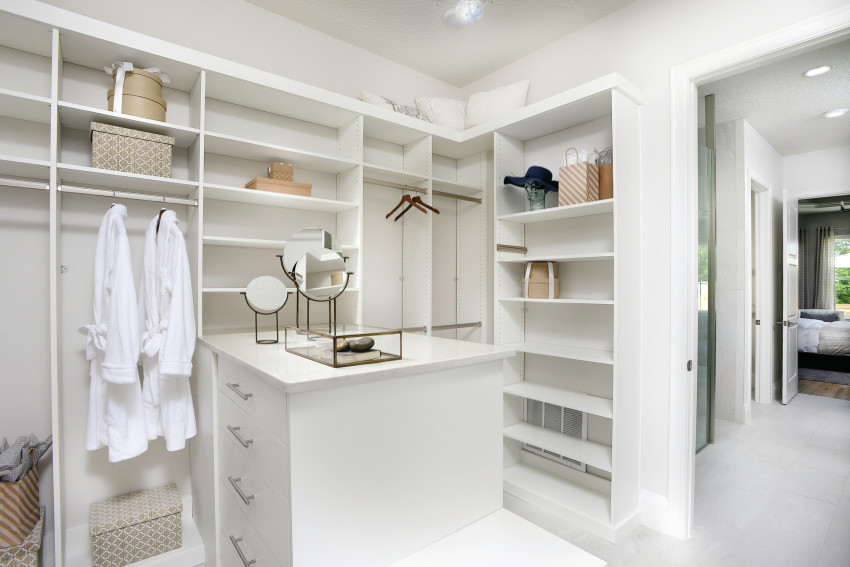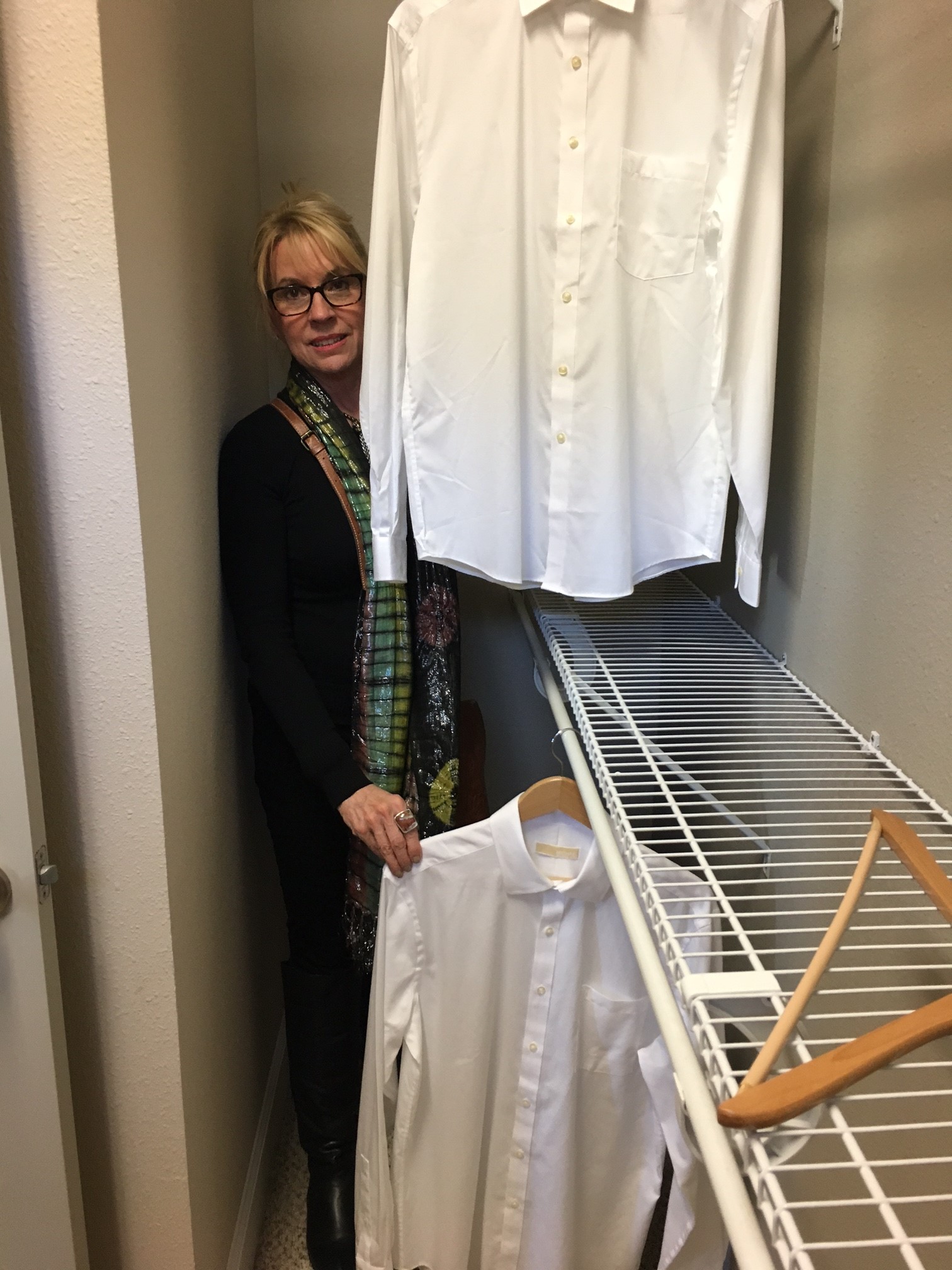Growing up, there was a common saying, “Win a man’s heart through his stomach.” While I won’t delve into giving relationship advice, I do have a phase for builders looking to boost sales: “Win a woman’s heart through the closet!” Women are often the decision makers when it comes to buying a home (Happy wife, happy life!). But what makes the master closet special? What tugs at these home-buyers’ heartstrings? Let’s cover some fundamentals.
How Big?
There are builders who believe that a closet can be as narrow as 5’ wide to accommodate two parallel rows of hanging. While an empty closet in a model home looks sufficient at 5’, once filled with clothes, homeowners realize that the space becomes impractical. A row of hanging is 2’ wide – do the math. Two rows of parallel hanging leaves only one foot to walk! Or worse, you could end up trapped like one of our favorite interior designers, Lita Dirks! Imagine if this space was filled with clothes.. We’d lose her! I digress… Ideally, 6’ is the bare minimum width. I strive for a closet that’s wider – 6’6” to 7’ – your clients will appreciate the breathing room.
How much hanging?
The real measure of a closet lays not in the square footage of floor space but in the amount of hanging space. When we design custom homes, we ask our clients to measure how much hanging they have in their current house. Often times, their clothes are scattered about in multiple closets if the master closet is too small.
A square master closet actually provides less hanging per square foot than a rectangular one. I believe that as the house size increases, so too should the amount of hanging increase. A general rule of thumb is that you should have 1% of hanging for every square footage of the home – before double hanging! So a 2,000 square foot home should have 20 lineal feet of hanging in the walk in closet(s). If you have his-her closets, I recommend slightly more for her since the man’s closet can have all double hanging. Two 6’ wide by 5’ deep walk-in closets will yield 20’ of hanging.
Beware of Built-ins!
If you’re considering built-in shelves or dressers in your closets, be sure that there is still ample hanging space after all the closet furniture is installed. I’ve often seen really decked out closets with drawers for sweaters and jewelry but – oops – there’s too little hanging space left!
Accessed from the bath?
How to access the closet is perhaps the most controversial aspect of closet design. Some buyers insist on accessing their closet directly from the master bath while others fear that proximity to steam will add too much moisture to their closet. This may have been the case years ago but today’s HVAC code requires a vent in all walk-in closets, creating positive air pressure in the closet and making moisture from the bath less likely to migrate into the closet. Simply turning on the vent fan in the bath will draw the moist air out of the space.
With the moisture issue settled, it all comes down to how the buyer lives. Personally, I prefer direct access from the bath, as it allows me to get dressed for my 6am Pilates class without disturbing my sleeping husband!
Maximizing the Space
Too often I find that builders forget to think in 3-D when it comes to their closets. If you are working with a 9’ or 10’ ceiling, use all of the height that is available! Instead of one shelf above the hanging, consider two. Yes, you need a step stool to access the top shelf – but what a great place to store off-season clothes or bulky suitcases as opposed to the floor!
Take a quick survey of the closets that you are building. Are they awesome or merely adequate – if that? Storage is becoming less of an afterthought and more of a selling point for today’s buyer. They are fed up with their homes working against them when it comes to staying organized. Let’s give them a closet that not only meets, but exceeds their expectations!
Categorized in: Design Solutions from a Working Mom's Point of View
This post was written by Housing Design Matters




